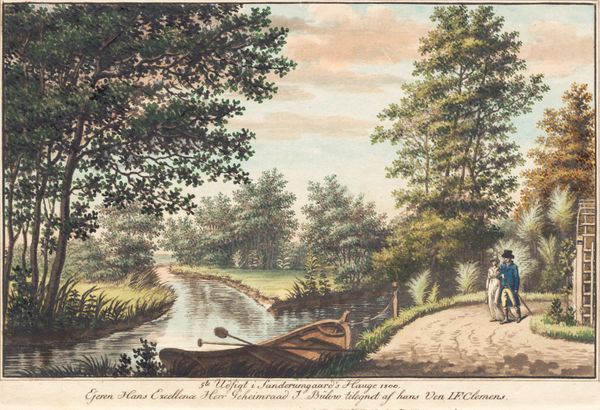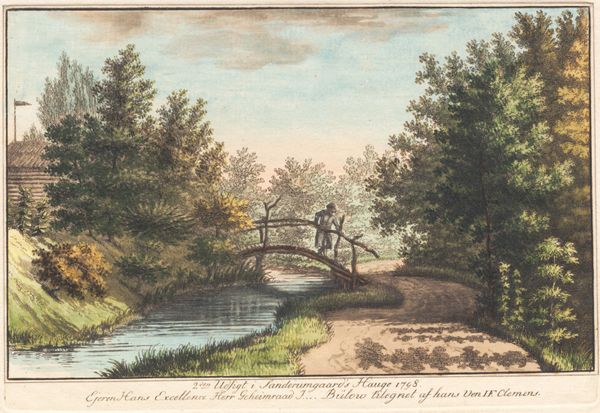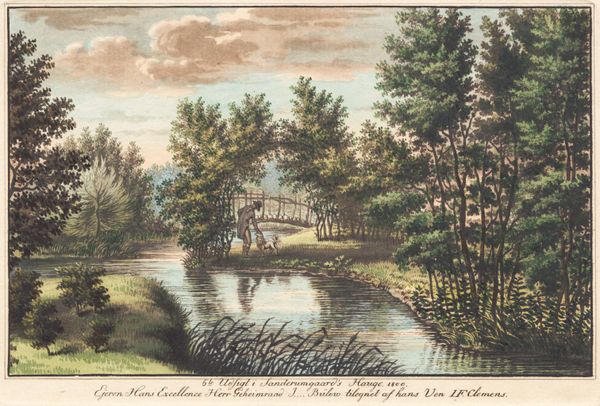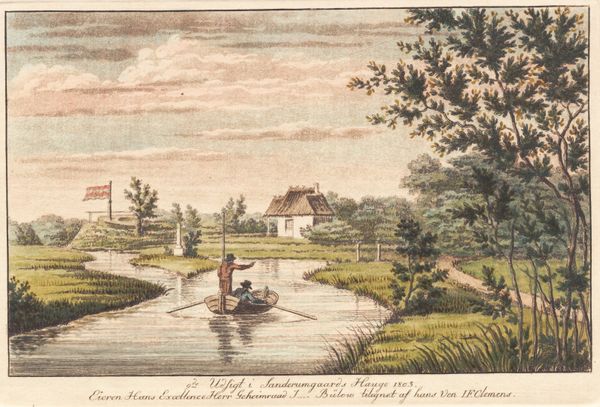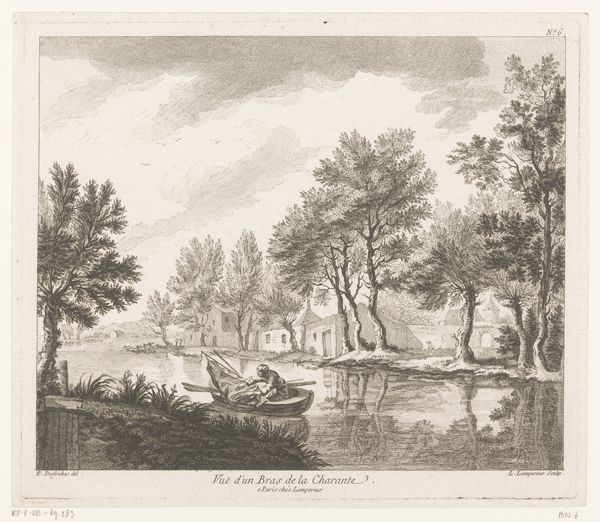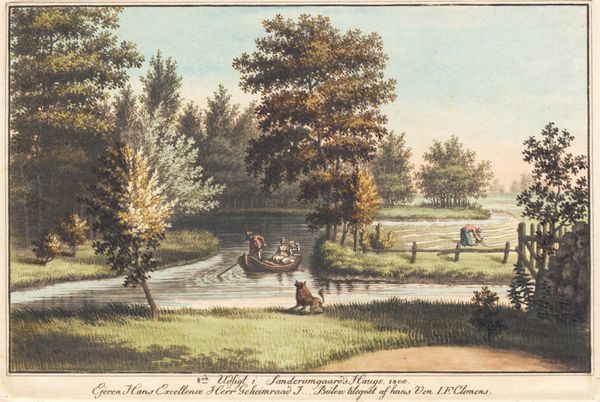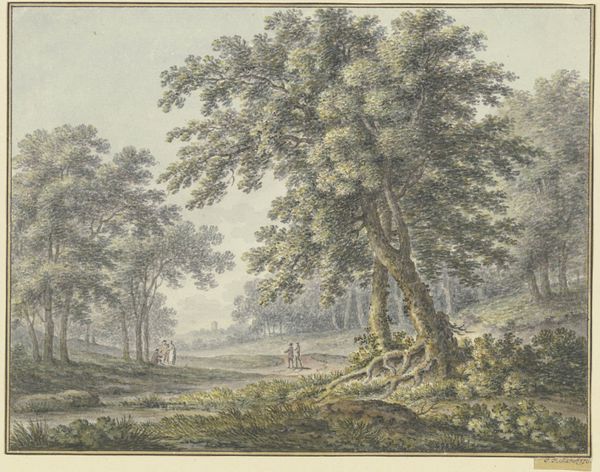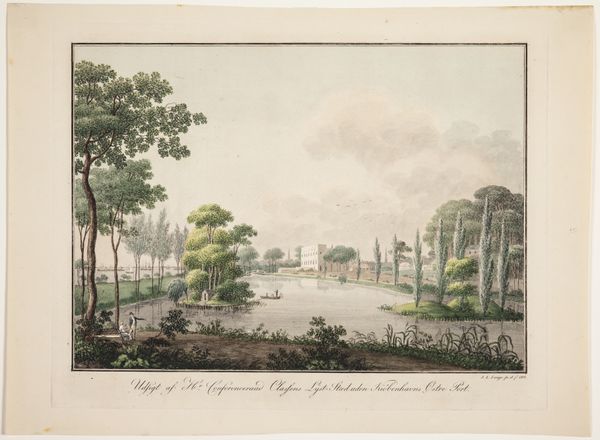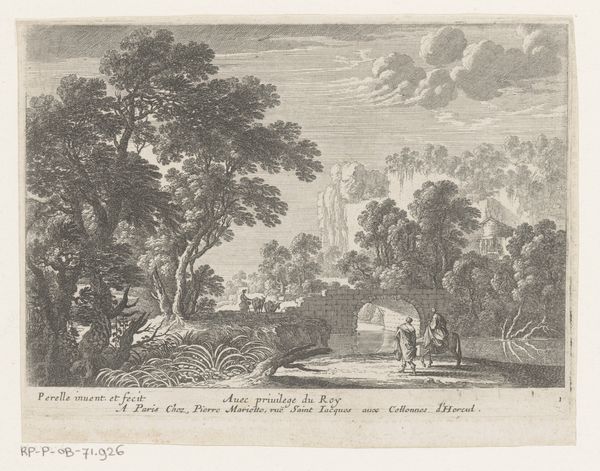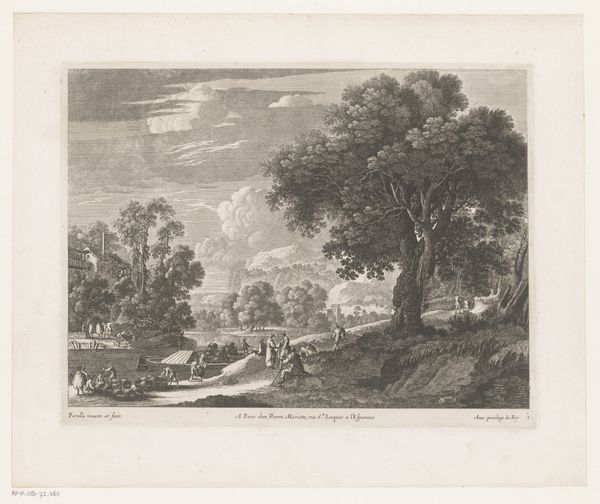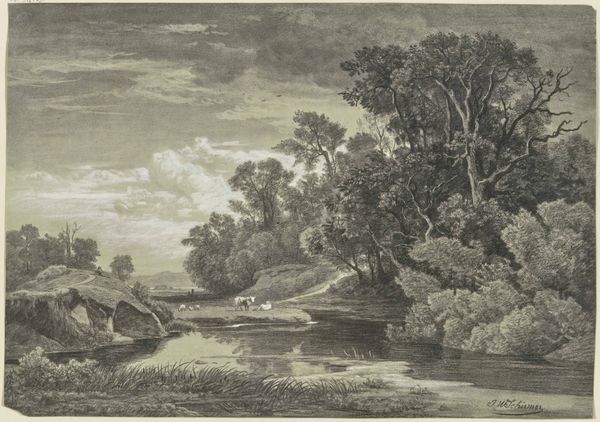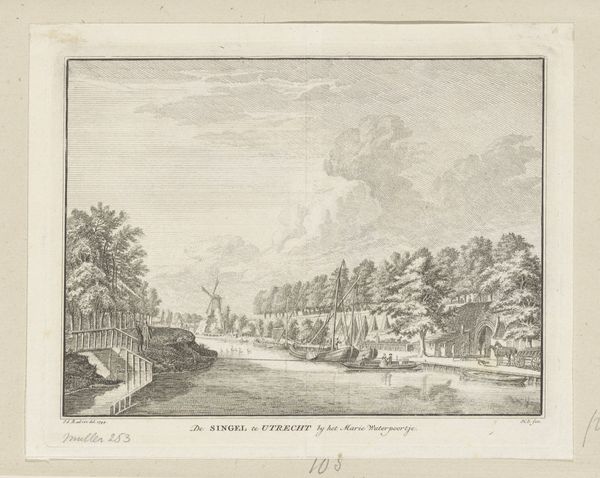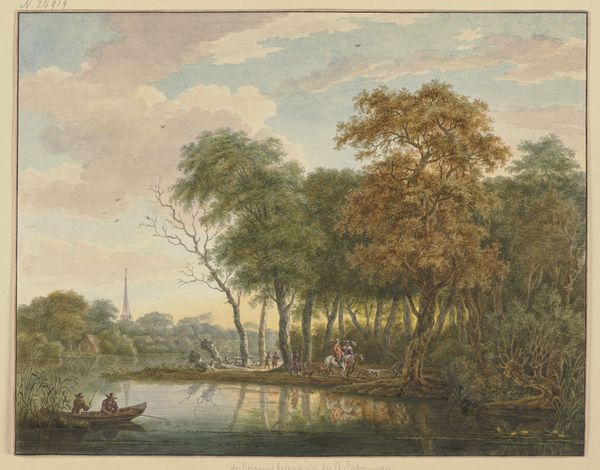
aquatint, drawing, print, watercolor
#
aquatint
#
drawing
# print
#
landscape
#
watercolor
#
coloured pencil
#
romanticism
#
watercolour illustration
Dimensions: 168 mm (height) x 217 mm (width) (bladmaal), 114 mm (height) x 167 mm (width) (plademaal), 104 mm (height) x 165 mm (width) (billedmaal)
Editor: This is "Sanderumgaards have 2," a 1798 watercolor, aquatint, and drawing print by J.F. Clemens. It evokes a sort of wistful melancholy, a woman sits pensively near a lake in a park, whilst in the background another wanders a path. What social context do you see informing a scene like this? Curator: The inscription dedicates the work to Hans Bulow; understanding Bulow’s position reveals insights. He was a high-ranking official, a "Geheimraad," placing him within the Danish elite. Picturesque landscapes became fashionable status symbols; they displayed a refined sensibility, artistic appreciation, and of course the financial means to commission and maintain such landscapes. What purpose, do you think, is the depiction serving by incorporating these figures into the scene? Editor: Are they stand-ins for the artist's patron and his wife? Like putting the owner in the picture? Curator: It goes further than simply representing individuals. Consider the social discourse surrounding landscape at the time. Romanticism elevated nature, associating it with virtue and sentiment. Displaying this landscape allows Bulow to associate himself with those very ideals. This scene portrays a controlled nature— ordered, planned, cultivated, which shows off his cultivated taste. It's an assertion of social standing through constructed nature. The art then exists as not simply decorative but serves as a form of social statement and, in some cases, cultural dominance. Editor: So, it's less about personal connection and more about public perception and social signaling? It certainly gives the piece another dimension to consider, from aesthetics to society and class! Curator: Precisely. We see how aesthetics and politics intertwined to construct this visual representation. Understanding that interplay helps us to avoid simplifying history and recognize the dynamic relationship between art and its public.
Comments
No comments
Be the first to comment and join the conversation on the ultimate creative platform.

